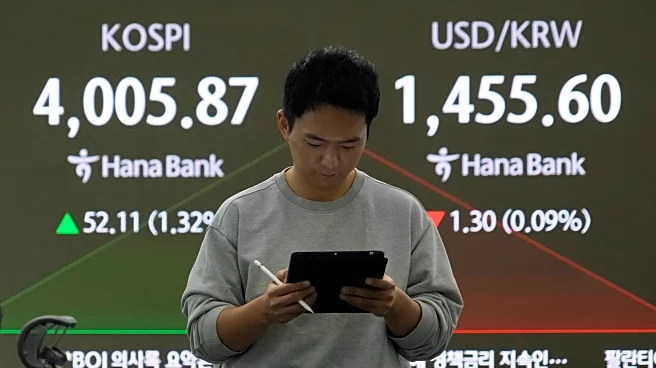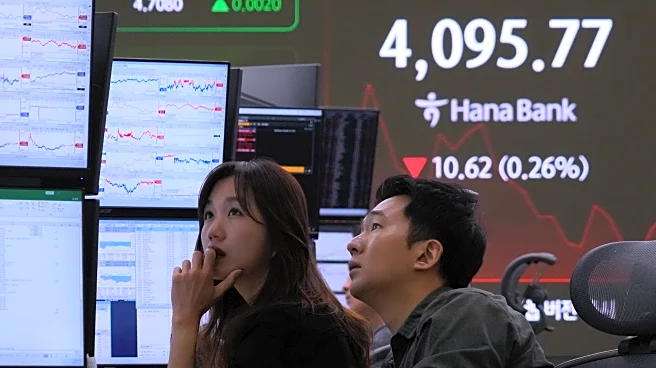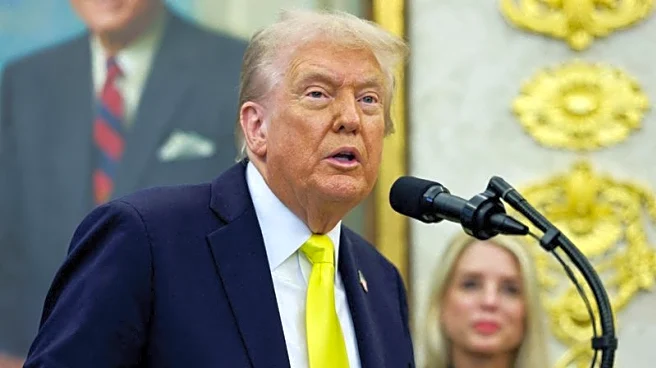What's Happening?
Oil prices experienced a decline of nearly 1% on Wednesday, influenced by market oversupply. Despite this, the potential end of the longest-ever U.S. government shutdown is anticipated to boost oil demand, mitigating further losses. Brent crude futures
fell by 60 cents, or 0.9%, to $64.56 a barrel, while U.S. West Texas Intermediate crude dropped by 62 cents, or around 1%, to $60.42 a barrel. Analysts have noted that crude oversupply is limiting price gains, with OPEC+ recently agreeing to pause output increases in the first quarter of next year. The U.S. House of Representatives is expected to vote on a bill to restore funding to government agencies, which could enhance consumer confidence and economic activity, thereby increasing crude oil demand.
Why It's Important?
The reopening of the U.S. government is significant as it could lead to increased consumer confidence and economic activity, potentially boosting demand for crude oil. This development is crucial for the oil market, which has been grappling with oversupply issues. The International Energy Agency's forecast that oil and gas demand could grow until 2050 further underscores the importance of stable government operations in supporting long-term energy demand. The outcome of the House vote could have immediate implications for market dynamics, influencing both domestic and international oil prices.
What's Next?
The U.S. House of Representatives is set to vote on the funding bill, which, if passed, will restore government operations through January 30. This decision could lead to increased economic activity and consumer confidence, potentially driving up oil demand. Additionally, the Organization of the Petroleum Exporting Countries and the U.S. Energy Information Administration are expected to release their outlooks, which may provide further insights into future market trends and demand projections.
Beyond the Headlines
The International Energy Agency's shift in forecasting methods, moving away from climate pledge-based predictions to those based on existing policies, suggests a more conservative approach to future energy demand. This change could influence global energy strategies and investments, particularly in the oil and gas sectors, as stakeholders reassess long-term demand expectations.















